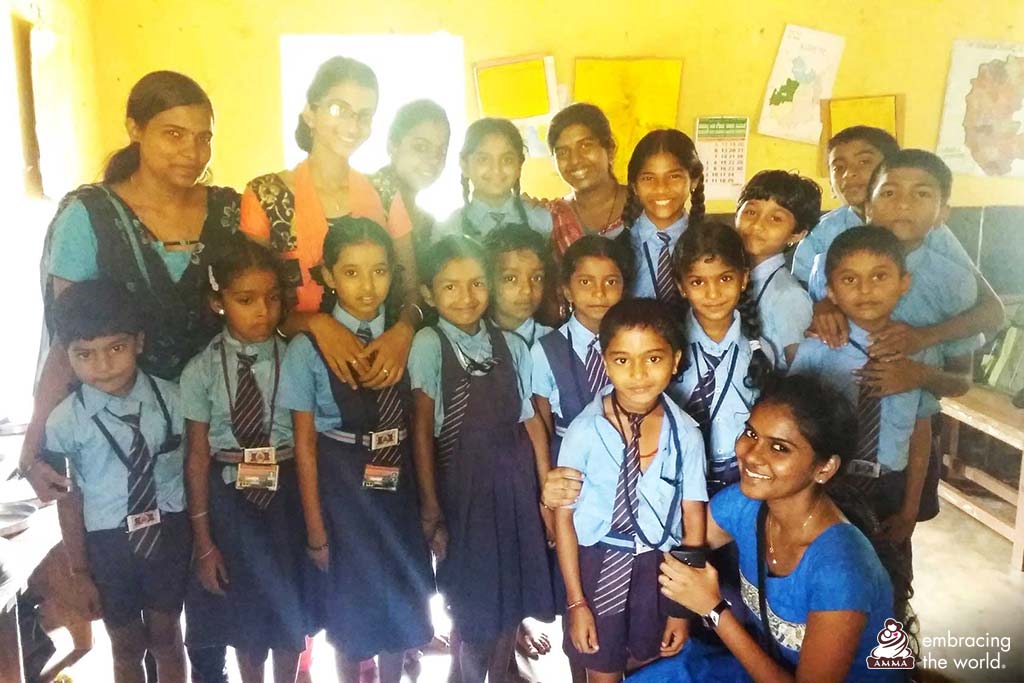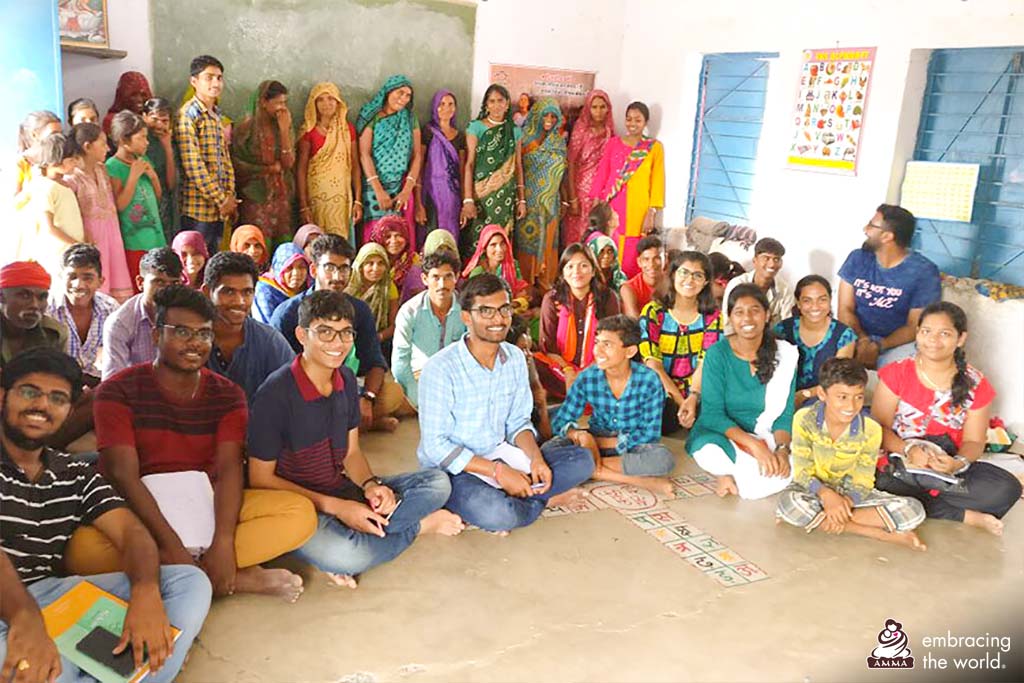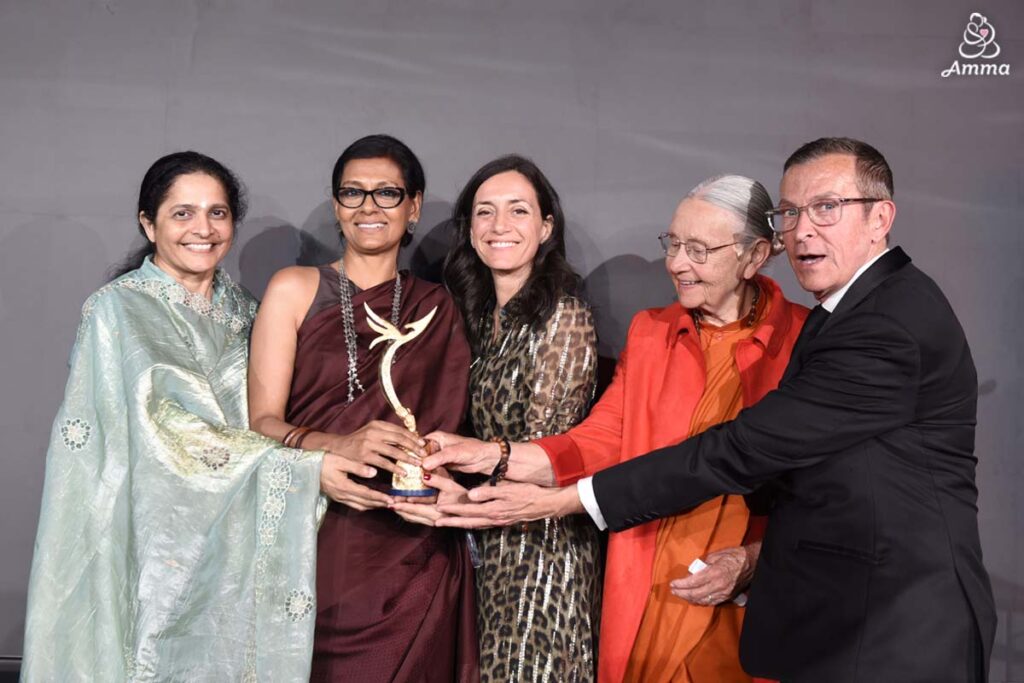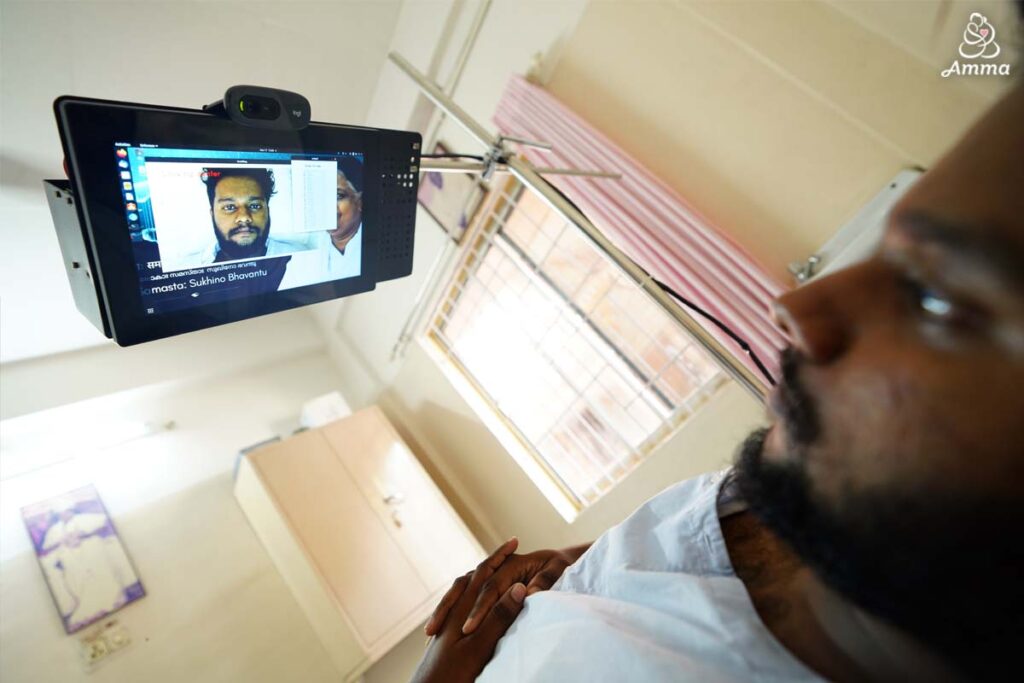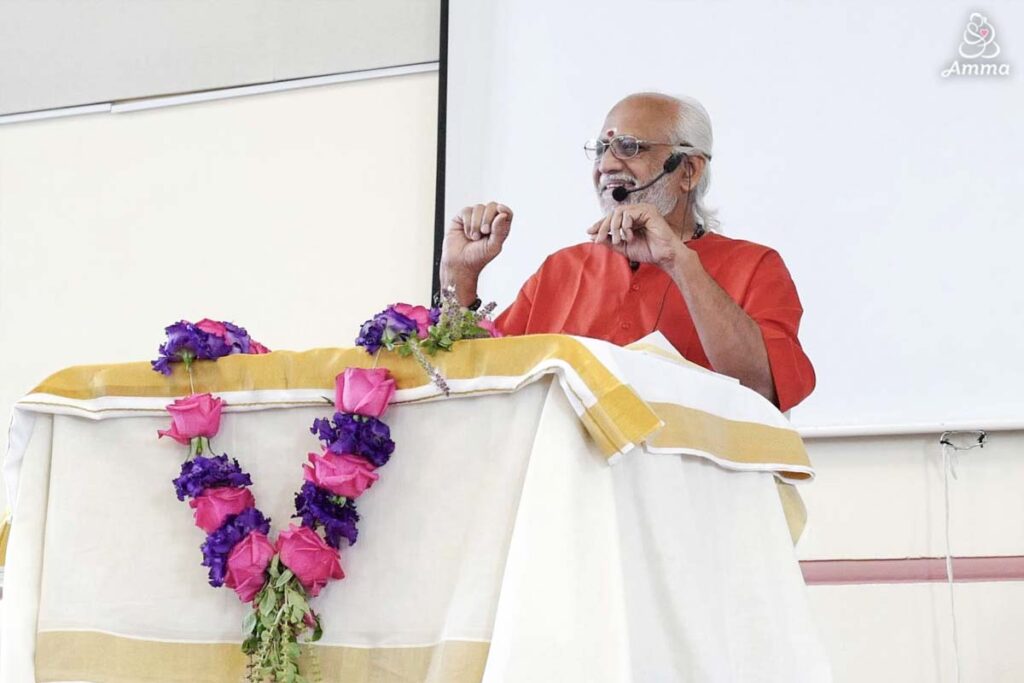“Seeing the way these villagers live has prompted me to start thinking with a sense of compassion,” explained Eashwaramoorthy, a student with Amrita Vishwa Vidyapeetham’s Mechanical Engineering Department in Amritapuri.
Eashwaramoorthy was one of more than a 100 engineering and biotechnology students who travelled to 13 villages across Rural India. The goal was to give the students the experience of seeing how people in India’s villages live. In this way, they can reflect upon how their university studies can be practically applied to help people’s lives. They were joined by 16 faculty members for the 10-day trip.

The project is in its fourth year and is done in coordination between Amrita Vishwa Vidyapeetham’s Live-in-Labs® and Amrita SeRVe. Live-in-Labs® is a credit-based experiential learning elective course. It applies classroom theory in real-world settings for the development of rural communities in India. Amrita SeRVe is the 101 Villages Project whose goal is to help empower villagers with the skills they need to live in communities that are prosperous and self-reliant. Rural India is home to most of the country’s poor.
It is evident the experience of the village internships instills a sense of compassion among the students. In fact, this is the very basis of the designing and implementation strategies they are learning. As stated by one of the faculty who joined the trip this year, “Bringing the students into this village environment has provided them a deeper sense of empathy on both personal and academic levels. Such experiences will definitely help mould their character and perception.”

The students and faculty were from School of Engineering of Amritapuri, Bangalore and Coimbatore Campus and from School of Biotechnology of Amritapuri Campus. Before the voyage began, they attended six-day workshops by Amrita Center for International Programs (ACIP) to introduce them to concepts in Human Centered Design (HCD), research methodology, co-design, sustainability theories, and Sustainable Social Change Models.
After that, they travelled by train to reach their destinations in the states of Uttarakhand, Uttar Pradesh, Madhya Pradesh, West Bengal, Orissa, Chhattisgarh, Punjab, Jammu, Jharkhand, Gujarat and Bihar. In their travels, the students had an opportunity to experience life through the eyes of a common villager. They were exposed to a whole new environment which they had never thought they would see.
The students found themselves living in areas surrounded by farms with plush green grass, people working in the fields, women fetching water, and cows grazing. All these activities taking place in natural settings brought a mood of inquisitiveness. Though they were deprived of the conveniences of their daily lives in the city, they didn’t really miss them. They quickly soaked in the village culture.
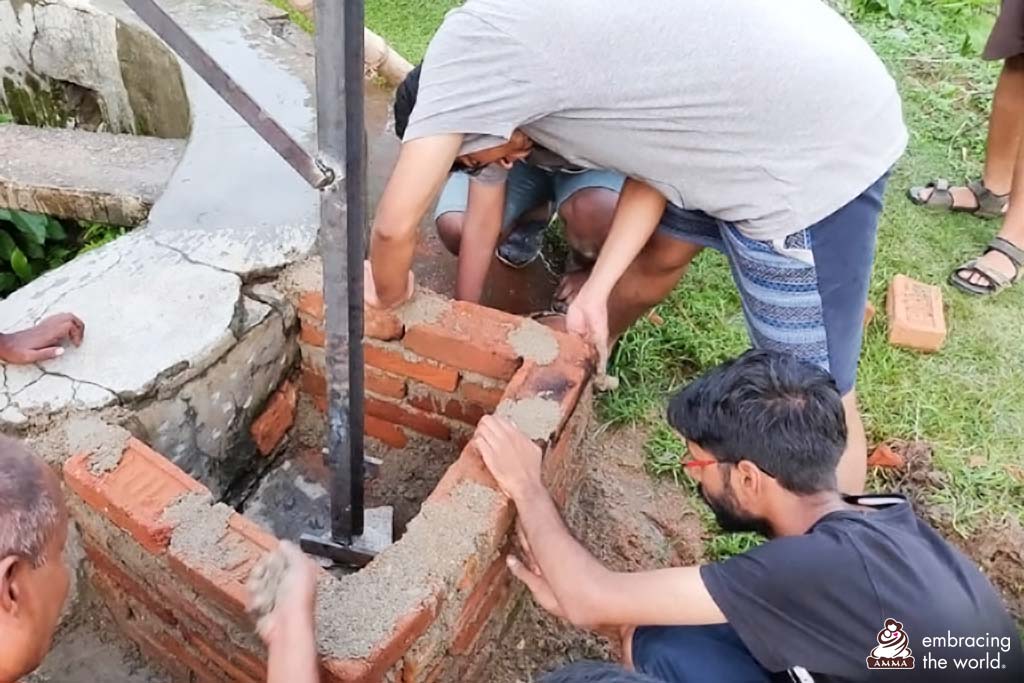
This didn’t mean it was all easy to witness. Students could see how the villagers live with countless challenges in the areas of health, water, irrigation, energy, skills development, waste management, agriculture, livelihood generation and infrastructure. Despite all that, in many places, they were struck by the level of hospitality that the villagers extended. It was as if the students were coming home to their own families and friends.
In this process, they also got the opportunity to see the amount of work that is being done by Amrita SeRVe, AMMACHI Labs, AmritaCREATE and Amrita Center for Wireless Networks & Applications in Rural India. The students have themselves admitted that they were not aware that Amrita has done such extensive research driven towards social welfare.

Waking up early in the morning to fetch water from a hand pump was an experience in and of itself. Things like this motivated the students to go and help the farmers in ploughing the fields and rearing the cattle. In some places, the students went out of their way to reconstruct a well and install pulleys to help the women draw water from their wells.
Through all of this, the students were able to experience the hardships faced by villagers every day. Now they are further fueled in their desire to come up with solutions to help ease these people’s lives.
“Sangeetha, a small girl studying in eighth standard, touched all our hearts with her sweet smile,” told Resya Reghu, who participated in the program in Byse, Karnataka in 2016. “Being poor, she had no hope of continuing her studies after tenth standard, like most of the students in this village. The hopelessness of the situation did not in any way affect the cheerfulness of that little girl. She was a true face of inspiration for us.”
